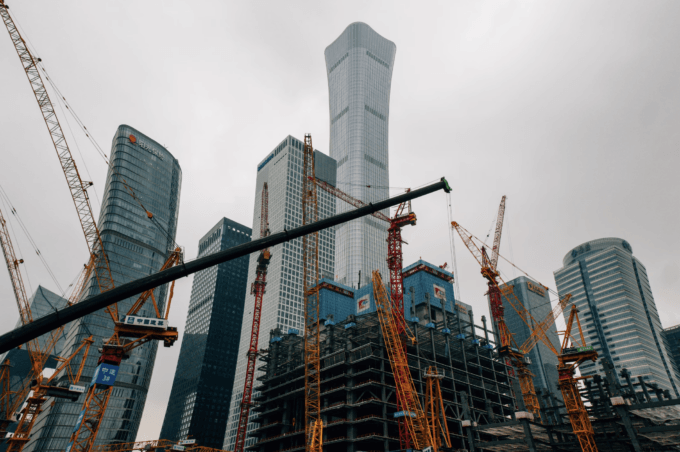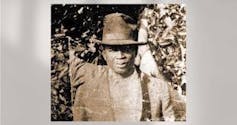A Planned, Socialist Economy Works:
The Economic Success of China

Photo by Christian Lue
Overnight American conservatives have gone from “socialism can’t work, communism can’t work” to “watch out–the Chinese Communist Party is taking over the world!” Yet few seem to see the unresolvable contradiction between these two views. Over the past four decades China has risen from the third world to possessing the world’s second-largest Gross Domestic Product. How? What the American political establishment can’t bring itself to acknowledge–a planned, socialist economy works.
Some try to explain away China’s success by asserting that China can develop so quickly because they’re an authoritarian dictatorship. But the Chinese Communist Party’s dictatorship retards development more than it helps it. Moreover, the history of the past century is littered with numerous capitalist as well as communist dictatorships, and few if any were able to progress anywhere near as far as China has. And while Western commentary often equates privatization with freedom and state control over the economy as tyrannical, some of the most vicious regimes of the past century have had free-market economies.
Some claim that China has succeeded because it is really capitalist. It is true that, like many third world countries, China has invited in a large amount of foreign private capital to help provide jobs and technology. China’s domestic private sector has grown substantially as well. But China is not a capitalist country–its banks and main industries, including most heavy industry, high-tech, energy, and defense, are still state-owned and deployed largely in a planned, socialistic manner.
For example, the China State Construction Engineering Corporation, a state-owned enterprise, is the largest construction company in the world, and is responsible for many of China’s world-renowned infrastructure projects, including high-speed rail, super-large bridges, expressways, urban comprehensive corridors, ports and waterways, and more.
China is currently on its 14th 5-Year Plan. The US Congressional Research Service explains that under the FYP, “State funding continues to underpin priority sectors” and the FYP demonstrates “China’s plans to further lean on state-led development.”
Moreover, the Chinese enterprises in private hands cannot simply act as they please–the Chinese government maintains influence over them for the purpose of ensuring that their actions do not undermine overall societal goals. The 14th FYP refers to this as encouraging “private enterprises to…actively fulfill their social responsibilities” and “improving the mechanisms by which private enterprises can participate in the implementation of major national strategies.”
Because the core elements of China’s economy are state-owned, China can plan its economy to meet societal and national goals, as opposed to capitalism, where potential profits–often short-term profits–dictate investment decisions. China’s green energy programs provide an excellent example of the superiority of a planned economy.
In 2006 China became the world’s largest emitter of greenhouse gases, edging out the United States. This hurt China diplomatically, particularly with those countries who stand to be hurt the most by a warming planet, and was generally bad for China’s image. It also exposed China to the demands and hypocritical moralizing of the advanced industrial countries, particularly the US.
Chinese leadership also faced internal pressure to address its serious domestic environmental problems. Moreover, its economic planners were looking for opportunities for investments that stressed new, cutting-edge technologies.
China’s ensuing five-year plans made heavy investments in numerous renewable technologies, including high-speed transmission lines, battery storage, solar and wind power, geothermal energy, and others. In How China Became the World’s Leader on Renewable Energy (Yale Environment 360, 3/3/24), Isabel Hilton, founder of China Dialogue, explains:
“In a world in which national climate targets are being missed, the speed and scale of expansion in China’s installed renewable capacity is unmatched.
“In 2020, for example, China pledged to reach 1,200 gigawatts of renewables capacity by 2030, more than double its capacity at that time. At its present pace, it will meet that target by 2025, and could boast as much as 1,000 gigawatts of solar power alone by the end of 2026, an achievement that would make a substantial contribution to…[what] the world needs to meet the 2030 targets of the Paris Agreement.
“When the International Energy Authority issued its assessment of the pledge to triple renewables globally by 2030, it pointed out that the 50 percent increase in global renewable installations in 2023 was largely driven by China. In 2022, China installed roughly as much solar photovoltaic capacity as the rest of the world combined, then went on in 2023 to double new solar installations, increase new wind capacity by 66 percent, and almost quadruple additions of energy storage…”
“Today, China has more than 80 percent of the world’s solar manufacturing capacity. The extraordinary scale of China’s renewables sector output has driven down prices worldwide, and this is a key factor in reducing the cost barrier to renewable systems for poorer countries.”
China has also made huge strides with electric vehicles–according to a 2023 report by the International Energy Agency, more than half the world’s EVs are in use on roads in China. From 2021 to 2023, the number of EVs sold annually in China grew from 1.3 million to 6.8 million, over eight times as many as were sold in the US.
Dr Tinglon Dai, a professor of business at Johns Hopkins University, says that Chinese EVs feature “high quality”, “low prices”, and “dizzying variety.”
Zeyi Yang, who covers technologies in China and East Asia for MIT Technology Review, asks, “How exactly did China manage to pull this off?” and explains:
“The Chinese government took steps to invest in related technologies as early as 2001; that year, EV technology was introduced as a priority science research project in China’s Five-Year Plan, the country’s highest-level economic blueprint…It’s ingrained in the nature of the country’s economic system: the Chinese government is very good at focusing resources on the industries it wants to grow.”
Given the state of electric vehicles in 2001, China’s decision was certainly a gamble. However, not only did investing in EVs give China the potential to gain a foothold in a huge new auto market, it also allowed China to address its urban air pollution problem and the opportunity to reduce its dependence on expensive imported oil.
China still generates around 70% of its power from coal but it has come a tremendous distance remarkably quickly because of what its planned economy allows it to do.
China’s economic achievements over the past several decades are so impressive one hardly needs to detail them. For example, according to the World Bank, between 1990 and 2018 China pulled 750 million people out of extreme poverty. China’s success is so noteworthy that Max Roser, research director in economics at the University of Oxford, felt compelled to write a piece called “The global decline of extreme poverty – was it only China?” In it he separates out the data on China’s progress from that of the rest of the world’s, which was far less impressive.
State-driven investment is the primary reason the Chinese economy continued to grow remarkably during the Great Recession and the ensuing decade, even though most countries suffered large economic declines. According to the World Bank, the world economy declined 2.3 percent in 2008-2009, and rose an average of only 1.3 percent from 2008 to 2017. By sharp contrast, China grew 9.5 percent in 2008-2009 and an average of 9 percent from 2008 to 2017.
When measured by purchasing power parity, China has had the world’s largest economy since 2016. It has the world’s largest foreign-exchange reserves, is among the leaders in global patent filings, as well as in research and scientific output, and is also the world’s largest high-technology exporter. China has the second-largest financial assets in the world,and is the world’s largest exporter and creditor.
So why has socialism succeeded in China while other socialist countries have faltered? China is the first country with a socialist, planned economy to ever be given a real chance to function as a normal country on the world stage and in the global economy. The others who have tried communism–Cuba, the Soviet Union, Vietnam, North Korea, and others, were targeted and often strangled by the capitalist world.
None of this is to say that China does not face serious economic challenges–“high winds and perilous, stormy seas”, according to Chinese President Xi. China confronts slowing economic growth, an aging population, a real estate bust, wealth inequality, capital flight, and increasingly fraught relations and trade wars with the US.
As Peter Kinsella, global head of foreign-exchange strategy at Union Bancaire Privé, explains, these Sino-American tensions have prompted companies to move their profits out as “Corporates are beginning to de-risk from China.”
Moreover, the CCP’s stranglehold on power restrains the country’s economic progress. As Soviet reformer Mikhail Gorbachev understood, dictatorship and press censorship are roadblocks to the creation of a modern, technologically advanced consumer economy.
Struggles are one thing, doom is quite another. In “The Delusion of Peak China: America Can’t Wish Away Its Toughest Challenger”, American international relations scholar Evan S. Medeiros chides American economists, political scientists and even President Biden for their giddy predictions of Chinese economic calamity, warning “if there is one lesson to be taken from the past 40 years, it is that the CCP and its management of the economy can often muddle through against the odds.”
Despite the many flaws of China’s proclaimed “Socialism with Chinese characteristics”, China’s economic success has proven an essential truth: when given the opportunity, socialism succeeds.


